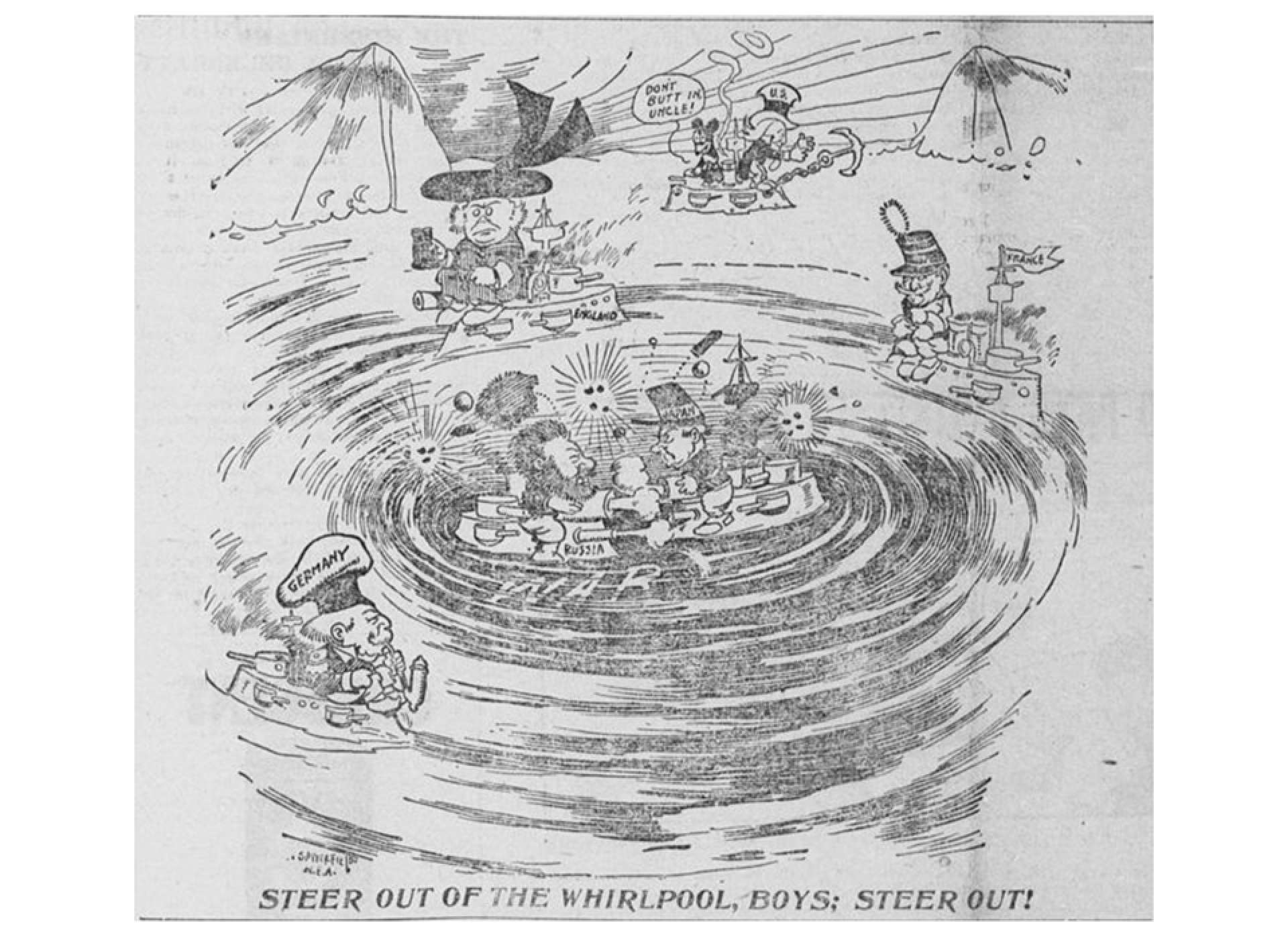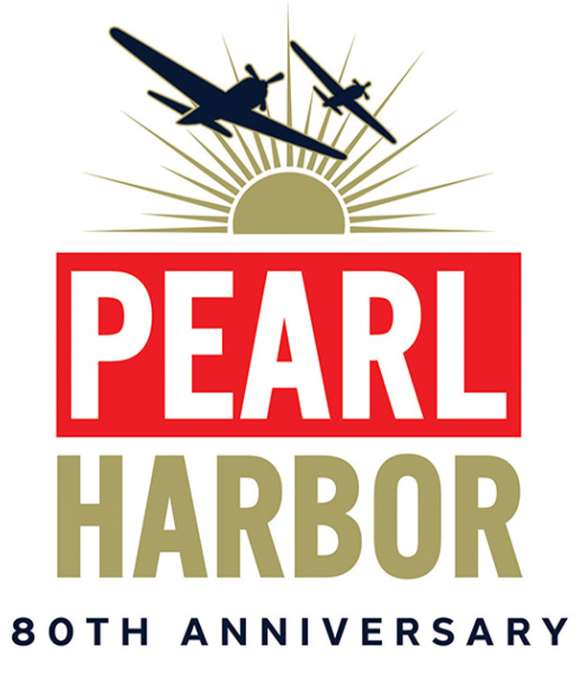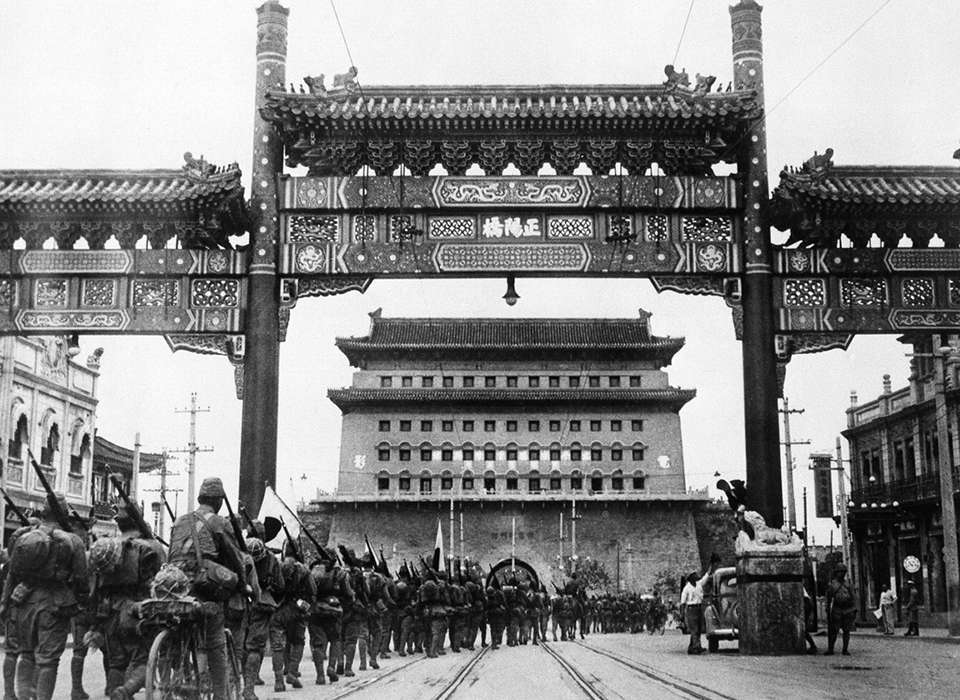I. Introduction
The date is December 7, 1941. Every American knows it, or should. A surprise attack by aviators of the Imperial Japanese Navy hits the unprepared US Pacific Fleet at Pearl Harbor, Hawaii. The attack comes, for most Americans, like a bolt out of the blue, early on a Sunday morning. The Japanese hit hard. In 75 minutes, more than 2,400 Americans are killed and 19 US Navy vessels damaged or destroyed.
Ever since that day—announced to a shocked listening public back home via the magic of radio, Americans have been trying to make sense of it. What made Japan decide to strike? What were relations between the two countries like at the time? How had things gotten to this point? President Franklin D. Roosevelt told the American people that the Japanese attack was an act of “infamy,” a crime, and that was a compelling explanation for most of his listeners, enough to lead his country to war.
Ask any historian, and they’ll usually tell you that historical events don’t just come out of nowhere. They’ve often been months, years, even decades or centuries in the making. Sure, you can always find near-term factors that explain an event, but it is equally important to study the “long fuse”—the long-term causes that extend back into the past.
And so it is with Pearl Harbor. To understand this world-historical event, you have to travel backwards in time—pretty far back, in fact, to the middle of the nineteenth century.
II. Japan Awakened
The date is July 8, 1853, and an earthquake is about to hit Japan. Not the seismic variety, the kind that shakes the ground under your feet. This was a symbolic earthquake, one that rocked the very foundations of Japanese life, traditions, and society, and in many ways, Japan still deals with the aftermath today.
Japan in 1853 was a feudal society. The land was ruled, theoretically, by a great warlord, or “Shogun.” Power on the local level, however—real power, that is—lay in the hands of the large landholders, the “daimyo.” Each daimyo had his own band of armed men, knights known as samurai who were sworn to serve him. The rest of the population, the vast majority, were serfs, peasants tied to the land, and thus subject to the power of their local daimyo.
There was a higher power, the Emperor, but his functions were largely ceremonial and religious, and he played no part in governing Japan. Indeed, according to Japanese religious belief, the Emperor was divine, the direct lineal descendant of the celestial goddess of the sun, Amaterasu Omikami. Japan was living much as Europe had in the Middle Ages, in other words. There was no real central government. Dominating Japanese political life were eight to 10 powerful clans. Shifting alliances among them were common, as was the occasional falling out and even assassination.
Japan was, in other words, a unique land, one that was out of step with the times. It was able to stay that way because of one other unique attribute: centuries before, it had isolated itself from the rest of the world. Japan did not trade with outsiders, it did not exchange ambassadors, it hadn’t fought a foreign war in centuries. Officials of the shogun allowed a single Dutch ship per year to put into port on the artificial island of Deshima, near Nagasaki. Foreigners were not permitted into Japan otherwise, and Japanese, likewise, were not permitted to travel abroad. This was serious business—punishable by imprisonment or even the death sentence.
This was precisely the reason why July 8 was such a shock: the day that Japan came face to face with the modern western world. Leading the way was a squadron of US Navy vessels, “black ships,” the Japanese called them, commanded by Commodore Matthew Perry. Against all Japanese law and tradition, Perry’s little fleet sailed into the harbor off the coast of the capital city, Edo. He hadn’t come on a campaign of conquest, but he wasn’t exactly on a goodwill mission, either. Rather, he had sailed across the vast Pacific to force Japan to open trade and commercial relations.

“Oral statement by the American Navy admiral.” Depiction of Commodore Matthew Perry (center) meeting with other American delegates. Courtesy of the Library of Congress.
By now, the western world was doing a booming trade with China, and isolated Japan now sat directly on some of the busiest trade routes in the world. A recent series of disturbing incidents had taken place, in which foreign ships had put into Japan due to storms, were seized, and their crews killed. Perry carried with him a letter from US President Millard Fillmore demanding an end to such outrages. To underline his seriousness, Perry even loosed a few volleys from his big guns onto the Japanese coast—blanks, to be sure, but definitely enough to impress the locals. Awed by the big guns and by the modern ships of Perry’s fleet, which moved without sails, the Japanese Shogun signed the Treaty of Kanagawa, promising humane treatment to shipwrecked sailors and opening two Japanese ports, Shimoda and Hakodate, to trade.
III. Japan on the March: War with China
The date is September 12, 1872, and a strange new mechanical monster is about to make its debut. Hissing vapor, belching smoke, and running on iron rails, Japan’s first steam locomotive goes into action. The iron horse makes the run from Shimbashi to Yokohama—about 19 miles—in less than an hour. A short hop, to be sure, but at the same time a giant leap.
Perry’s voyage was a blow to the Japanese. In an instant, the country learned how far behind the rest of the world it was in science, in technology, and in military power. The future looked grim. Japan lay open to any demands the more advanced industrialized powers might be inclined to make. If it wanted to survive, it had no choice but to reform itself, and to remodel itself completely after the western pattern that Perry had just revealed.
And reform it did, carrying out one of the dizziest and most revolutionary transformations in all of world history. Over the next few decades, Japan passed through stages of development that had taken the rest of the world centuries. In 1867, progress-minded daimyo from the Choshu, Satsuma, and Tosa clans rose up in rebellion against the Shogun, who had proved helpless to defend Japan from the foreign interloper. Demanding the restoration of the emperor to political power in Japan, they triumphed by 1869.
The young emperor took the reign-name “Meiji” (from the Japanese word for “enlightened”), and we still refer to this crucial event as the Meiji Restoration. Japan now had a symbol of national unity, much like the United Kingdom or Germany. The feudal system was abolished altogether and a new central government formed. As a sign that Japan had entered a new era, Edo now changed its name to Tokyo (the “eastern capital”). The Restoration also freed the serfs and transformed them into tax-paying landowners, abolished the samurai class, and formed a new army out of peasant draftees.
It was a new Japan, and reform touched every area of Japanese life. The first telegraph lines went up in 1869, linking Tokyo and Yokohama, followed by a connection between Tokyo and Aomori, the northern city of Honshu Island, in 1874. The first steam locomotive appeared in 1872, running from Shimbashi to Yokohama. The traditional “topknot” hairstyle worn by men was out; bowler hats and collars were in.
The most important achievement came in the military realm. Leaders of the new regime realized that it had to modernize their military if the country were to survive in the new, dangerous world in which it lived. Here, Japan played it smart, bringing in French and German advisors to train the new Imperial Japanese Army, and British advisors (naturally) to train the Imperial Japanese Navy.
And just like all the other powers of the day, Japan soon began to use that new military to pursue an imperialist foreign policy against its weaker neighbors. The force received its first test in a war with China in 1894-95. This first Sino-Japanese War ended in an easy Japanese victory, and demonstrated to the world that Japan was capable of projecting military power abroad. The Japanese also won their first colonial territories, the island of Taiwan and the Liaotung peninsula, containing the key naval base at Port Arthur, Japan’s first foothold on the Asian mainland.

First Sino-Japanese War 1894/95: Soldiers of the Imperial Japanese Army firing their Murata Type 22 rifles. Photo from “Bakamatsu Meiji no Shashin,” by Ozawa Kenshin.
The sudden arrival of a new military in Asia was hardly good news to the European powers who were already playing the imperial game in the region, however, and reaction was not long in coming. In the so-called “triple intervention,” France, Germany, and Russia demanded that Japan return its gains on the mainland. The Empire, forced to give back territory it had conquered with the blood of its own soldiers, was angry, and grew even angrier in 1897 when Russia itself took control of Port Arthur. As a result, the next 10 years saw Japan in the midst of a furious arms buildup, adding six new divisions to its army (for a total of 13), and four new battleships to the fleet (for a total of six). The target of its ire was the country it viewed as most dangerous to its own rising ambi-tions in East Asia: Russia.
IV. Japan on the March: War with Russia
The date is February 8, 1904, and the Japanese navy has just launched a very successful surprise attack on an enemy fleet, one that catches its opponent napping and completely unprepared.
Japan’s victory over China was a shock to the world, but even more shocking was the war with Russia in 1904-05. This Russo-Japanese War opened with a surprise Japanese naval strike on the Russian fleet at anchor in Port Arthur, an attack that did great damage and established Japanese superiority at sea for the duration of the conflict. With the Russian fleet temporarily out of the picture, Japan was able to transport massive armies to Korea and Manchuria on the Asian continent. Here, repeated Japanese offensive thrusts beat the Russian army back in one bloody battle after the other. This conflict was Japan’s coming-out party, proof that it had modernized smartly, that it belonged in the big leagues, that it had become a great power itself.

Political cartoon from February 15, 1904 by Bob Satterfield depicting the Russo-Japanese War as a whirpool risking drawing in Germany, Britain, and France; the US (Uncle Sam) resists being sucked in by dropping an anchor. Courtesy of Library of Congress.
That was the good news. The bad news was that Japan had picked a fight with an enemy many times larger than itself, a foe who could absorb even serious defeats, raise new armies, and fight on. Japanese forces won big battles at the Yalu river, Liaoyang, and Mukden, but the Russians kept retreating and, even worse, kept bringing ever-larger armies into the field. Japan had proven it could win battles, but the Empire had a finite number of soldiers and was bankrupting itself in the process of supplying armies in far-off Manchuria.
By 1905, both sides needed peace. US President Theodore Roosevelt agreed to broker negotiations, which took place at Portsmouth, NH, partly on the Presidential yacht, Mayflower. Both sides had to make concessions: Russia surrendered Port Arthur, the Japanese dropped their demand that Russia pay reparations. Neither side was particularly pleased, public opinion in both countries was suitably outraged, and President Roosevelt won the Nobel Peace Prize.
V. Hard Times
It is September 18, 1931, and a small explosion wrecks a brief stretch of the Southern Manchurian railroad. No one knows it, but Asia and the Pacific are on the road to war.
Japan’s martial reputation stood tall during World War I. The country fought on the side of the Allies, seizing a string of German colonies in Asia—the Shantung peninsula in China and the Marshall, Mariana, and Caroline island chains in Pacific Micronesia. Japan was now both a power in mainland Asia and a contender for mastery of the Pacific.
World politics being what they are, however, newcomer Japan had placed itself squarely on the radar screen of the other powers. Japanese success alarmed the European powers, intent on maintaining their own colonial empires in the region, as well as the US, which not only had colonies in the Pacific (the Philippines, Guam, and Hawaii), but also stood for an “open door policy” in China. The United States, in other words, refused to recognize “spheres of influence” in China, precisely while Japan was eagerly carving one out.
As a result, we cannot say that any of these victories brought real stability to Japan. The 1920s were tough years all over the world, as global markets stubbornly refused to recover from World War I. The Japanese economy was particularly sluggish, and the government had no choice but to cut military spending drastically, from 42 percent of the total budget in 1922 to 16 percent by 1931. The Great Depression followed in the 1930s, hitting Japan’s foreign trade hard, with the value of its exports—a crucial sector of the economy—sinking 50 percent.
With the government failing to master the crisis, the mood within the armed forces turned increasingly radical, even ugly. Many Japanese officers came to feel that only they could save the country. After all, Japan might be losing an economic war, but had never lost an actual war. A secret society grew within the officer corps, especially among junior officers, known as the “Imperial Way” faction. They demanded an aggressive, expansionist Japan, the only Japan, officers claimed, that could survive in the current economic crisis. Japan, they felt, could and must conquer its way out of the Great Depression. Their goal—an idea shared by many of the militarist states of the era—was “autarky”: economic independence and self-sufficiency in raw materials, food, and industrial production. As an economic program, autarky was hardly realistic; as a call to action, however, it proved irresistible to many.
Unfortunately, the only way resource-poor Japan could achieve autarky was conquest: seizing neighboring lands, riches, and people. And Japan had a perfect candidate to supply all of those things: China, a once-great empire now lagging well behind Japan in organization and technology. Here, Japan could gain raw materials, a massive supply of labor and a vast closed market for its goods. Indeed, Japan already had a foothold within China on the Kwantung Peninsula, as well as permission from the League of Nations to guard the Southern Manchurian Railroad (SMRR), stretching south from the city of Harbin to the Japanese naval base at Port Arthur.
The entire province of Manchuria, likewise, was a tempting target—a treasury of raw materials like coal and iron ore, a vast and fertile plain for agriculture, and a stepping-stone to the rest of China. On September 18, 1931, Japanese forces stationed along the SMRR, the Kwantung Army, blew up a small section of the railroad near Mukden, blamed the act on Chinese “saboteurs and bandits,” and used the incident as an excuse to fan out and occupy the entire province.
While Japan down-played the occupation as a mere police action, dubbing it the “Mukden Incident,” it was a clear act of aggression. Chinese leader Chiang Kai-shek appealed to the League of Nations and the League duly condemned Japan’s action, but did little else. Japan responded by leaving the League and declaring Manchuria to be “independent,” a puppet kingdom called Manchukuo. The next year, Japa-nese forces landed at Shanghai, sparking heavy fighting with Nationalist Chinese forces for control of the great port city, and a year after that swallowed up the northern Chinese province of Jehol. Japan was on the march.

Chinese delegates address the League of Nations after the Mukden Incident. Photo courtesy of Bibliothèque nationale de France.
VI. March to Disaster
The date is February 26, 1936. It is night. On the snow-covered streets of Tokyo, soldiers of the 1st Infantry Regiment, commanded by 1st Lt. Yasuhide Kurihara, march silently towards the residence of Prime Minister Keisuke Okada. Their mission: to kill him.
The curious thing about Japan’s move into Manchuria was that it had been planned and executed by Japanese army officers without the approval, or even foreknowledge, of the civilian government in Tokyo. Indeed, the 1930s saw the Japanese military intervene over and over in internal politics and cow civilian politicians who tried to resist. It was an era of plots, attempted coups, and assassinations. In the “May 15 Incident” of 1932, for example, 11 young naval officers murdered Prime Minister Inukai Tsuyoshi. Likewise, the “Military Academy Incident” of August 1935 saw cadets murder the head of the Army Mobilization office, whom, they claimed, had been sabotaging Japanese expansion.
By far the most serious act of internal violence, however, was the February 26 incident of 1936. This was an attempted military coup, in which 1,400 young officers, many of them members of the Imperial Way Faction, seized control much of central Tokyo, murdering a number of government officials (including Home Minister Makoto Saito, Finance Minister Korekiyo Takahashi, and Ar-my Inspector-General of Military Training, Jotaro Watanabe), and demanding a more aggressive foreign policy. These plotters, too, had a Prime Minister in their sights, but alert guards at Okada’s residence offered just enough resistance to allow him to get away.
Okada’s sin? He had supported signing the Washington Naval Treaty of 1921, which officers felt placed Japan in a permanent position of inferiority to the West. Certainly, it was no stretch to say that Japanese civilian officials genuinely feared for their lives if they opposed the military, wished to cut the defense budget, or tried to follow a more conciliatory foreign policy. In that sense, Japan had now become a military dictatorship.
With the civilian leadership cowed, Imperial Japanese forces were ready for the big move, the main event, as it were, in their quest for empire and autarky. In July 1937, as Japanese troops were carrying out maneuvers west of Peking (Beijing), firing erupted with Chinese troops near the famous Marco Polo Bridge. While both sides blamed the other, the Japanese had almost certainly fired first. As in Manchuria, the Japanese army now used the incident to launch a full-scale invasion of China proper. This was more than a skirmish or the seizure of a province: it was all-out war, an invasion by 600,000 men, with its aim the destruction of the Chinese state and the transformation of China into a Japanese colony.
VII. The Long Fuse
Japan’s rise to power in Asia was an amazing story—a rapid-fire modernization, the formation of a powerful army and navy, and one successful war after the other. Certainly, history knows no process quite like it, and nations in the underdeveloped world even today can learn much from the Japanese example.
But as successfully as Japan had run its race, danger signals were much in evidence. A long fuse was burning, and an explosion seemed inevitable. The Empire had already picked a fight with the largest land power in the world, Russia. Japan won that war, but victory was uneven, and had come at great cost. Now, for the second time, it had launched a war against the world’s population giant, China. As Japanese forces overran northern China, early signs were positive. But war is fickle. What if rapid victory eluded Japan? The country was, once again, facing an enemy with vast human and material resources. If Japan didn’t win quickly, it probably wouldn’t win at all. What if the war dragged on or turned into some kind of stalemate? Wouldn’t rivals and enemies on the international stage seek to take advantage of Japan’s troubles?
The European powers had enough trouble on their hands in Europe, with the rise of Adolf Hitler and the threat of increasingly belligerent Germany. Across the Pacific lay another power, however, one that would almost certainly demand a say in what Japan was trying to do in East Asia. As with all of Japan’s other foes, this land was a giant, with almost unlimited industrial and military potential.
Back in 1932, US Secretary of State Henry L. Stimson sent a shot across Japan’s bow. During the fighting for Shanghai in January, he warned that the US Government would not recognize any territorial or administrative changes the Japanese might impose upon China, and that the “open door” must be maintained. This Stimson Doctrine, as it came to be known, was Washington’s response to a dispute over a single city. Now, with Japanese troops rampaging across China, plundering, killing, and raping their way through this vast and ancient land, a series of questions emerged, posing themselves with increasing urgency.
What would the United States do now? Would it intervene to block Japan’s path of conquest?
And what would Japan do then? How had it reacted in the past when it saw another power standing in the way of its plans?

The Attack On Pearl Harbor December 7, 1941
The Museum is commemorating the 80th anniversary of Japan's attack on Pearl Harbor with over 80 days of articles, oral histories, trivia, artifacts, collection features, videos, and more.
Robert Citino, PhD
Robert Citino, PhD, is the former Samuel Zemurray Stone Senior Historian in the Jenny Craig Institute for the Study of War and Democracy.
Cite this article:
MLA Citation:
APA Citation:
Chicago Style Citation:






![Max Fuchs, New York City cantor, sings as Rabbi Sydney [sic] Lefkowitz, Richmond, VA, conducts the first Jewish services from Germany.](/sites/default/files/styles/max_650x650/public/2025-10/image1.jpg)


